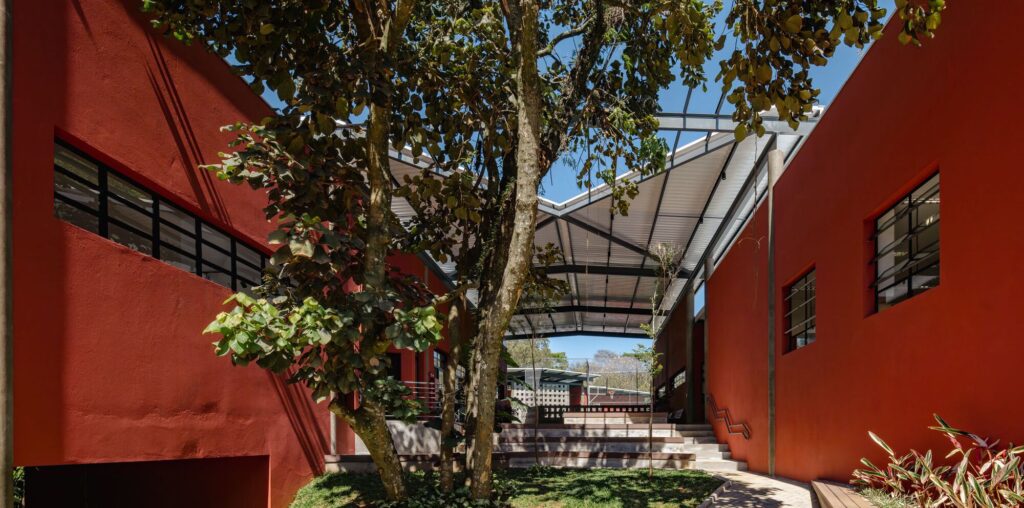

Text description provided by the architects. The Santa Marta Center was created in 1962 by the initiative of mothers of students from the Santa Maria School together with the Institute of the Sisters of the Holy Cross. The institution promotes the reception, coexistence and learning of families in vulnerable situations, contributing to their training, access and permanence in the job market. The activities are carried out by volunteers and Sisters, with the support of staff.

For more than 60 years, its headquarters have been located in an old stable at the back of the school grounds. In 2012, the first studies for an extension were carried out. In 2014, emergency renovations were carried out in order to avoid discontinuing activities. In 2020, a multidisciplinary team was organized to draw up the Needs Programme. Construction began in 2022, with inauguration in 2024. Services were not interrupted during construction.

Its headquarters are located on a large plot of land in the southern part of the city of São Paulo, high above a valley with permanently preserved woodland, springs and a stream. Since it was impossible to use the existing buildings, new ones were built. However, the past was not forgotten: 900 clay bricks were selected to build a wall of memories and a showcase was proposed in front of it to exhibit the students’ work. In this way, past and present form the gateway to the new complex.

The proposal was based on the creation of spaces integrated with nature, respecting the natural profile of the land in order to avoid major earth movements and the possible removal of existing trees, the use of natural lighting and ventilation and the collection and reuse of rainwater. To this end, the program was divided into blocks laid out in clearings and places where there were already small buildings. The horizontality and organization in blocks respects the historical scale of the buildings and guarantees accessibility to the whole. The flows seek to maximize encounters in order to enhance views of the valley and promote interaction between people, the environment and learning.


A central square was proposed to house collective activities and function as a space for integrating the different uses proposed by the institution. The square is organized based on the location of centenary trees, where an amphitheatre made up of bleachers has been proposed to contemplate nature. Four blocks are based on this configuration: Block 1 houses the women’s training rooms, Block 2 houses administrative uses, Block 3 caters for children and adolescents and Block 4 houses adult care and support such as a cafeteria, storage rooms and a staff area. A network of squares and paths provide opportunities to meet, in addition to those proposed in the Needs Program. The Welcome Square is made up of benches and planters. The Integration Square uses the shade of a large tree as a space for socializing. The children’s block is surrounded by play areas and a multi-sports court.






